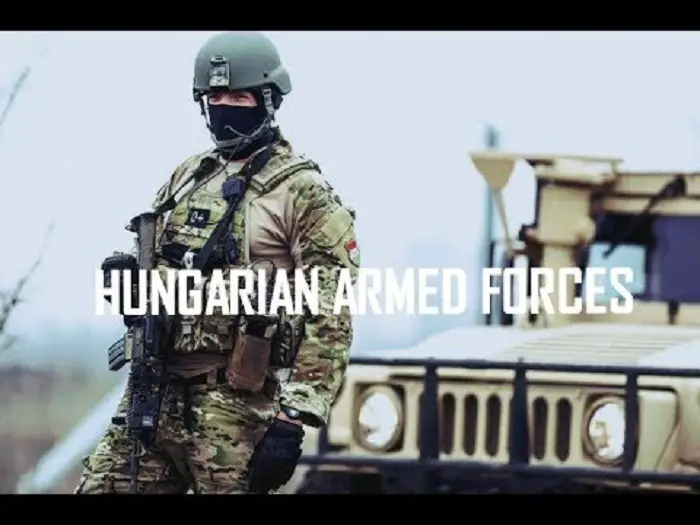Hungarian Defence Forces (Hungarian: Magyar Honvédség) is the national defence force of Hungary. The President holds the title of commander-in-chief of the nation’s armed forces. The Ministry of Defence jointly with Chief of staff administers the armed forces, including the Hungarian Ground Force and the Hungarian Air Force. Since 2007, the Hungarian Armed Forces is under a unified command structure. The Ministry of Defence maintains the political and civil control over the army. A subordinate Joint Forces Command is coordinating and commanding the HDF corps. In 2016, the armed forces had 31.080 personnel on active duty, the operative reserve brought the total number of troops to fifty thousand. In 2017, military spending will be $1.21 billion, about 0.94% of the country’s GDP, well below the NATO target of 2%. In 2012, the government adopted a resolution in which it pledged to increase defence spending to 1.4% of GDP by 2022.
Military service is voluntary, though conscription may occur in wartime. In a significant move for modernization, Hungary decided in 2001 to buy 14 JAS 39 Gripen fighter aircraft for about 800 million EUR. Hungarian National Cyber Security Center is re-organized in 2016 in order to become more efficient through cyber security.
In 2016, the Hungarian military has about 700 troops stationed in foreign countries as part of international peacekeeping forces, including 100 HDF troops in the NATO-led ISAF force in Afghanistan, 210 Hungarian soldiers in Kosovo under command of KFOR, and 160 troops in Bosnia and Herzegovina. Hungary sent a 300 strong, logistics unit to Iraq in order to help the US occupation with armed transport convoys, though public opinion opposed the country’s participation in the war. One soldier was killed in action because of a roadside bomb in Iraq.
During the 18th and 19th century, Hungarian Hussars rose to international fame and served as a model for light cavalry in many European countries. In 1848–49 HDF achieved incredible successes against better-trained and equipped Austrian forces, despite the obvious advantage in numbers on the Austrian side. The 1848–49 Winter Campaign of Józef Bem and the Spring Campaign of Artúr Görgey are to this day taught at prestigious military schools around the globe, including at West Point Academy in the United States. In 1872, the Ludovica Military Academy officially began training cadets. By 1873 HDF already had over 2,800 officers and 158,000 men organized into eighty-six battalions and fifty-eight squadrons. During World War I out of the eight million men mobilized by Austro Hungarian Empire, over one million died. During the 1930s and early 1940s, Hungary was preoccupied with the regaining the vast territories and huge amount of population lost in the Trianon peace treaty at Versailles in 1920. Conscription was introduced on a national basis in 1939. The peacetime strength of the Royal Hungarian Army grew to 80,000 men organized into seven corps commands. During World War II the Hungarian Second Army was near to total devastation on banks of the Don River in December 1942 in Battle for Stalingrad. During the Socialist and the Warsaw Pact era (1947–1989), the entire 200,000 strong Southern Group of Forces was garrisoned in Hungary, complete with artillery, tank regiments, air force and missile troops with nuclear weapons.
As of 2016 Global Peace Index shows, Hungary is one of the world’s most peaceful countries, placed 19th out of 163.
















